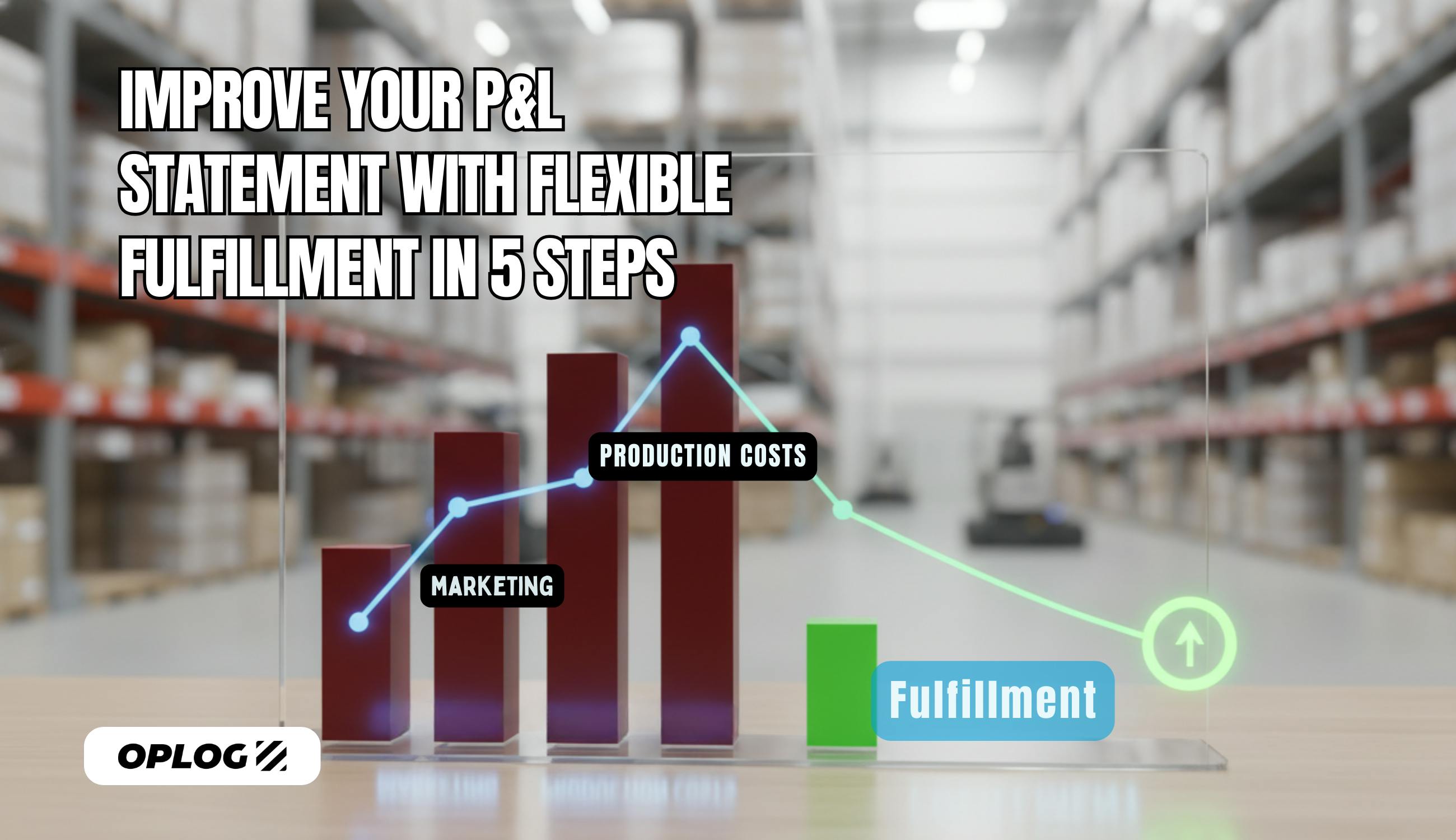Fulfillment is a crucial part of the supply chain process that should never be compromised, as it plays a vital role in ensuring customer satisfaction, retention, and loyalty by delivering on the promises made by your business.
Like the conductor of an orchestra, effective fulfillment operations harmonize various components, from inventory management to order processing and logistics, ensuring that products transition from storage shelves to the hands of eager consumers accurately and on schedule.
It's crucial to realize the significance of the fulfillment process. According to a report by OnTrac, 98% of consumers believe that shipping directly impacts brand loyalty. Also, a study by Shipstation revealed that as many as 84% of consumers are unlikely to purchase from a retailer after going through a single negative shipping experience.
So, while your brand is successfully scaling operations, you need to pay close attention to fulfillment operations, optimizing the process efficiency and quality.
How can you scale your fulfillment operations smartly and strategically to meet the increasing demands of your customers and the market?
We will explore some of the common challenges of organizational growth for fulfillment operations, some of the best practices for overcoming them, and some tips for choosing the right fulfillment partner for your business.
But first…
What is an effective fulfillment operation?
Effective supply chain fulfillment operations can be likened to your favorite restaurant, ensuring a seamless dining experience.
The restaurant's inventory management mirrors a well-stocked warehouse, ensuring ingredients are readily available to fulfill customer orders without shortages. This requires careful tracking of inventory levels and proactive replenishment to avoid disruptions.
Order processing mirrors the accuracy and efficiency of a fulfillment center. Waiters accurately capture your orders, relaying them to the kitchen as a fulfillment center receives and processes customer orders promptly and without errors.
The kitchen staff represents the heart of order fulfillment, akin to warehouse operations. As warehouse workers pick and pack orders efficiently, the kitchen staff prepares dishes precisely, ensuring quality and timely delivery.
Order delivery mirrors the final stage of fulfillment, where waiters ensure your orders reach you, just as delivery personnel ensure packages reach their intended recipients. Any additional requests or concerns are addressed promptly, prioritizing customer satisfaction.
A restaurant's operation mirrors effective fulfillment, emphasizing accuracy, speed, and customer satisfaction. Just as a restaurant strives for a seamless dining experience, effective fulfillment operations deliver a smooth and satisfying customer journey.
Challenges of organizational growth for fulfillment operations
Organizational growth can bring many benefits to your business, such as increased revenue, market share, and brand awareness. However, it can also pose many challenges to your fulfillment operations, such as managing larger inventories, optimizing supply chain management, dealing with more complex logistics, and ensuring timely delivery of products to customers.
As your brand gains more exposure and popularity among customers, it becomes increasingly important to review and refine your fulfillment strategy to ensure that it can handle your operations' increased demand and complexity.
Some challenges you are likely to experience are:
- Being understaffed: An increase in your order volume will translate to needing more staff to handle the fulfillment tasks. However, hiring and training new staff can take time and effort. Moreover, you may need help with employee turnover, absenteeism, and burnout.
- Diverse customer needs: A scaling business means more customers, and more customers come with varied and complex needs, such as faster delivery times, customized packaging, personalized messages, and international shipping. These increase the complexity and variability of your fulfillment processes.
- Keeping up with Innovation: While focusing on fulfilling increasing orders, you may need more resources and time to innovate and improve your fulfillment processes. This can limit your ability to adapt to changing customer expectations and market conditions.
- Regulations: Scaling into new markets or regions has its perks and challenges. Countries have laws that require you to comply with different government standards regarding taxes, customs, duties, safety, environmental impact, etc. These can add more costs and complexity to your fulfillment operations.
It's important to proactively and strategically address challenges impacting fulfillment efficiency, quality, and customer satisfaction.
So, let’s look at how we can take on these challenges and emerge as winners.
Best practices for smart scaling your fulfillment operation
To overcome growth challenges in your fulfillment operations, it is essential to strategically scale your business and implement best practices that can improve efficiency and quality and reduce costs and risks.
Let’s look at the best practices for smart scaling your fulfillment operations.
Assess the current and future customer demand and expectations
For your growing brand to succeed, it is crucial to deeply understand the market trends, customer segments, and preferences that can impact your fulfillment operations.
By gaining insights into these areas and making data-driven decisions, you can optimize your operations, improve customer satisfaction, and ultimately drive growth for your business.
For example, IKEA considers the demand for low-cost, high-quality, sustainable products in different regions and channels.
Consumer preferences, expectations, and purchasing power differ across regions, influencing the demand for specific product features and price points. In some markets, affordability may be the primary driver, while quality and sustainability may take precedence in others. IKEA considers these nuances and adapts its product mix accordingly.
Evaluate the existing fulfillment capabilities and gaps
To sustain growth, you should regularly evaluate your fulfillment capabilities and identify performance gaps.
Conduct an audit to identify your strengths and weaknesses and take necessary steps to improve its fulfillment process.
This will help ensure that your brand can meet customer expectations and maintain high customer satisfaction, which is essential for long-term success.
Design a fulfillment strategy
Taking a cue from IKEA, the brand balances cost efficiency and customer service by utilizing a hybrid model of in-house fulfillment and third-party logistics (3PL) providers.
Defining a clear vision and set of objectives is crucial to guiding your fulfillment operations growth. This means taking the time to carefully consider your business needs, customer expectations, and available resources to determine the best course of action.
Once you have a solid strategy, you can choose the fulfillment model that aligns with your goals and maximizes efficiency, whether in-house, outsourced, or a hybrid approach.
Use Technology to Optimize the fulfillment process
Nike does a fantastic job at optimizing its fulfillment process using technology.
For example, Nike utilizes 3D printing technology to produce custom-made products like the Nike Vaporfly Elite Flyprint shoe, which is meant for elite marathon runners. This approach helps Nike to reduce material waste, shorten production time, and lower shipping costs.
The company also uses smart sensors to track and monitor its inventory, orders, shipments, and returns. RFID tags embed information about each product, such as size, color, style, and location.
Utilizing the right technology allows you to centralize your supply chain process on one platform and access inventory data from various sources, including suppliers, distributors, retailers, and customers, to optimize your fulfillment process.
Build a flexible and resilient fulfillment network
Fostering strategic partnerships across different regions is crucial for efficiently scaling fulfillment operations.
You need to establish a network of fulfillment centers, warehouses, distribution centers, and partners to handle the increasing order volume and complexity.
For example, Nike partners with JD.com, China’s largest online retailer, to offer same-day delivery service in select cities. Nike also partners with Flexport, a digital freight forwarder, to streamline its international shipping process.
Choosing the right fulfillment partner for your business
Depending on your business size, goals, budget, and capabilities, you may decide to handle your fulfillment operations in-house or outsource them to a third-party service.
Each option has advantages and disadvantages, so you need to weigh them carefully before deciding. Here are some tips for choosing the exemplary fulfillment service for your business:
Some tips for choosing the right fulfillment partner for your business are:
- Estimate your monthly order volume: If you have a low or inconsistent order volume (less than 100 orders per month), you may prefer to handle your fulfillment in-house. However, if you have a high or steady order volume (more than 100 orders per month), you may benefit from outsourcing your fulfillment to a third-party logistics (3PL) provider.
- Consider pricing and fees: Regarding fulfillment services, the pricing, and fees can be affected by several factors, such as the number of orders, size and weight of the products, storage requirements, shipping methods, additional services, contract duration, and so on. It's crucial to compare the pricing and fees of different fulfillment services and choose the one that provides the best value for your money.
- Check reviews: It is essential to consider the reputation and reviews of various fulfillment services to determine their quality, reliability, and customer satisfaction. You can evaluate the reputation and reviews of such services from different sources like online platforms, industry associations, customer testimonials, and more. A partner with a good reputation and great customer and expert feedback is recommended.
- Use of Technology: When selecting a fulfillment partner, it’s crucial to consider the ease of technology integration into their operations and accessing critical information that can either make your business thrive or bring challenges. OPLOG offers a solution that simplifies your fulfillment operations with 4PL service, allowing you to focus on providing exceptional customer service without worrying about balancing smooth operations. With OPLOG-ONE, you get a platform that maximizes IoT and enables you to manage all aspects of your orders, packaging, shipping, and delivery in one place, making your job much easier.
Wrapping up
To achieve sustainable growth, it is crucial to scale fulfillment operations effectively.
This can be accomplished by proactively addressing fulfillment challenges that might arise, creating strategic partnerships with key players in the industry, and adopting technology solutions that enable businesses to streamline their processes and increase efficiency.
As stated earlier, choosing the right fulfillment partner with 3PL/4PL services removes most of your scaling worries, helping you align fulfillment capacity with customer expectations.






